The Small Traditional Village of FYTI
Driving here from Paphos is only 25 minutes and 15 from Polis
. The village got its name from the word "foito" the Greek verb for 'study' -children from the surrounding villages would come here to attend classes. The year 1985 the school closed because of lack of students. Nowadays the residents are only 97 and the few students attend classes in Paphos or Polis.
I step off the bus at the paved square. Everything there is to see is all around. There is a small colorful garden on one side and a bronze bust in memorial to the village's benefactor -Constantinos Fotides who managed to bring water in the village in 1938. Up till then the water supply was by wells. The garden encompassing the memorial is awash with terracotta pots of marjoram, basil and colorful flowers while the walnut and pine trees shade some wooden benches. The stone fountain and the old preserved olive press stand out among this beautiful little oasis of color making it look more traditional.
Through my short walk I noticed evidence of renovation work on some of the very old stone houses
. Living in a traditional stone-built house has become very fashionable lately and many are those who return to their village to live the peaceful rural village life.
As I mentioned on the previous entry the village is also found in maps and guides as Phiti, Foiti, even Phyti and is known for its own special style of weaving, rich in colours and designs known as “Fythkiotika” or “Fytiotika” –the Cypriot and Greek pronunciation.
Don’t expect any hustle and bustle out here just the peace and tranquility of a lazy village that has become tolerant on the few tourists who happen to pass by. When referring to any activity the centre of attention throughout the village is around the paved square with the Folk Museum, the Traditional Weaving Exhibition, the two Restaurants, and the Church of St. Dimitris that dates back in the early 1800s
. I found the church locked but it was lunchtime and I had no intention of disturbing the priest.
The great thing about my trip here is the friendliness of the locals.
The person who really impresses me most is Mr. Charalambos Mavrellis, a retired school teacher who is the curator of the museum and a person who knows well the history of the village. I find him in the Museum of Folkloric and Weaving Art and he gives me a really informative tour around the exhibits. His love for his village is obvious and he is very authentic and a person I can chat for hours without getting tired. In the past he tells me the locals had wool from the local sheep which was particularly fine and it was used to provide clothing for the inhabitants, but not any more. The few sheep are kept for their milk and meat nowadays. Local cotton crops were planned and locals produced symbolic garments for religious ceremonies, - this practice again has stopped for years now
.
There is a silk worm production which it might not be in huge quantities right now Mr. Mavrellis claims but a new colony is being established and the silk coming from this village may be in production in the coming years. Mrs. Theano is his wife whom I find sitting at her loom and with pride takes me around the woven textiles and shows me very old family pieces, pictures of her when she was a young girl, and I ask her to do some weaving for me to see how she works.
Several of these beautiful decorative textiles and pieces are for sale. I believe the main attraction of the museum is the traditional weaving display, including a fully operational spinning wheel –‘anemi’ as it is called in Greek.
On the upper level there is a lot of old farm equipment on display with a very old threshing machine which is huge made of timber with sharpened rock embedded into the surface
. I can imagine how it was dragged over cereal crops by teams of donkeys those days. Alongside all the farming equipment, different pairs of leather boots, village garments ranging from “Sunday best” to clothes worn for every day working hours along with some traditional clothing. The museum is not that big but it is indeed interesting. This amazing couple is dedicated and passionate with what they are doing and in this amazing way they keep the history alive. The entrance is free.
Just opposite the Church I come to the Traditional Weaving Exhibition that functions both as factory and a shop. I find Mrs. Ireni Diomidous who practices weaving, as well as tapestry making on a table loom. She is telling me that she has arranged to offer weaving classes through the ‘Voufa Cultural and Environmental Society’. She is very talkative, and stops her work to tell me about the village and its people
. She tells me that lacework was produced by nearly all the women of the village those days and weaving was a practice learnt by young girls from their mothers when they would start their weaving at the age of 12 and begin making clothes to decorate their wedding day. I want to thank both Theano and Irini for the time they spared to show me around. From the growing of cotton for spinning to the creation of original contemporary items using traditional techniques, there is huge cultural and artistic value in Fytiotika.
The practice appears as a complex and sophisticated art form that expresses and embodies a way of living and seeing, as well as recording culture.
The two Restaurants:
I have the chance to meet the two owners of these restaurants but because of the rich breakfast earlier in the morning I decide to skip today’s lunch
.
The ‘Fyti village tavern’ used to be a boys’ school. It is nicely decorated and the owner is a nice lady called Maria. It seems to be more popular probably because it is bigger and also it was made known through a writer who happened to have lunch here and wrote about it in a magazine some years back. The lady who runs it had this luck so if tourists come across this article they get straight here.
Across the road the ‘Pefkos Restaurant’ is much smaller but there is a garden seating above the road crammed with plant life with vines hanging decorously around the place creating a lush protection from the sun. The owner Mr. Christodoulos Stefanou is very polite and insisted to offer me a drink and some coffee. The fact that the owner might not understand much English is not a problem because he can provide you with the English menu list. (How about some sigh language which usually works)? The key words can be feta, salad, olives lountza or halloumi) It is more quiet and while I am waiting for my bus a few metres from Pefkos I find the chance to start a conversation with a group of French who were having lunch at that moment
. They are impressed they tell me first from the kindness of Mr. Stefanou, the good quality of food and the reasonable priced menu.
My bus shows up promptly and the driver wants to know if I had a good time. On the way we chat a lot and I even hand him my camera at a point where we see a dam in a distance. He stops the lorry and takes some photos for me without hesitation. He suggests that if he drops me off at “Stroumbi bus stop” the bus from Paphos can pick me from there so I will save much time. I find this idea tempting and I have not regretted it. I appreciate all these tips given to me and in my turn I share with you.
There is an automatic petrol station behind the bus stop so nobody is around. People come to fill their tanks, pay by card and leave. I waited for 15 minutes probably less when the bus from Paphos showed up. Indeed what an excellent tip this was! I came to the hotel at least 90 minutes earlier.
FYTI -The Folk Museum & Weaving Exhibition, PAPHOS
Tuesday, June 05, 2012
 Latchi, Cyprus
Latchi, Cyprus
Other Entries
-
4Amazing Gardens and Resort!
May 288 days prior Limassol, Cyprusphoto_camera49videocam 0comment 7
Limassol, Cyprusphoto_camera49videocam 0comment 7 -
5Le SPA and Fitness Club - Le Meridien Limassol
May 288 days prior Limassol, Cyprusphoto_camera6videocam 0comment 0
Limassol, Cyprusphoto_camera6videocam 0comment 0 -
6Dining at the Le Meridien Limassol Resort
May 288 days prior Limassol, Cyprusphoto_camera33videocam 0comment 5
Limassol, Cyprusphoto_camera33videocam 0comment 5 -
7The Thalassotherapy Treatments -
May 297 days prior Limassol, Cyprusphoto_camera24videocam 0comment 0
Limassol, Cyprusphoto_camera24videocam 0comment 0 -
8Heading to VOUNI by Rural Buses, Limassol District
May 306 days prior Vouni, Cyprusphoto_camera3videocam 0comment 0
Vouni, Cyprusphoto_camera3videocam 0comment 0 -
9Vouni Lodge, Traditonal Accomodation -Vouni
May 306 days prior Vouni, Cyprusphoto_camera22videocam 0comment 2
Vouni, Cyprusphoto_camera22videocam 0comment 2 -
10VOUNI- A stroll &Things to See -Limassol District
May 306 days prior Vouni, Cyprusphoto_camera31videocam 0comment 4
Vouni, Cyprusphoto_camera31videocam 0comment 4 -
11Takis Tavern -Village Life in Cyprus
May 306 days prior Vouni, Cyprusphoto_camera70videocam 0comment 2
Vouni, Cyprusphoto_camera70videocam 0comment 2 -
12"Orea Hellas Restaurant" Vouni, Limassol
May 315 days prior Vouni, Cyprusphoto_camera46videocam 0comment 3
Vouni, Cyprusphoto_camera46videocam 0comment 3 -
13My Stay at the Semiramis Hotel - Platres, Troodos
May 315 days prior Platres, Cyprusphoto_camera32videocam 1comment 11
Platres, Cyprusphoto_camera32videocam 1comment 11 -
14The Tzielefos Venetian Bridge -Troodos, Cyprus
Jun 014 days prior Platres, Cyprusphoto_camera27videocam 0comment 4
Platres, Cyprusphoto_camera27videocam 0comment 4 -
15Walking the Kalidonia Trail in Platres
Jun 014 days prior Platres, Cyprusphoto_camera49videocam 0comment 8
Platres, Cyprusphoto_camera49videocam 0comment 8 -
16Kataklysmos Festival in Larnaca
Jun 023 days prior Larnaca, Cyprusphoto_camera14videocam 0comment 8
Larnaca, Cyprusphoto_camera14videocam 0comment 8 -
17My stay at the Library Hotel in Kalavassos
Jun 032 days prior Kalavassos, Cyprusphoto_camera18videocam 0comment 4
Kalavassos, Cyprusphoto_camera18videocam 0comment 4 -
18The Potamonde Baths & Spa- Stroll in Kalavassos!
Jun 041 day prior Kalavassos, Cyprusphoto_camera38videocam 0comment 13
Kalavassos, Cyprusphoto_camera38videocam 0comment 13 -
19The Aphrodite Beach Hotel -Latchi, Paphos
Jun 041 day prior Latchi, Cyprusphoto_camera6videocam 0comment 2
Latchi, Cyprusphoto_camera6videocam 0comment 2 -
20From Latchi to Fyti by Bus, Plus Tips
Jun 05earlier that day Latchi, Cyprusphoto_camera6videocam 0comment 4
Latchi, Cyprusphoto_camera6videocam 0comment 4 -
21FYTI -The Folk Museum & Weaving Exhibition, PAPHOS
Jun 05 Latchi, Cyprusphoto_camera69videocam 0comment 19
Latchi, Cyprusphoto_camera69videocam 0comment 19 -
22Aphrodite Beach Hotel -Latchi (Beach holidays)
Jun 05later that day Latchi, Cyprusphoto_camera26videocam 0comment 11
Latchi, Cyprusphoto_camera26videocam 0comment 11 -
23Breakfast in Beautiful Surroundings - Latchi
Jun 061 day later Latchi, Cyprusphoto_camera33videocam 0comment 8
Latchi, Cyprusphoto_camera33videocam 0comment 8 -
24Dining at the Aphrodite Beach Hotel -Latchi
Jun 061 day later Latchi, Cyprusphoto_camera28videocam 0comment 13
Latchi, Cyprusphoto_camera28videocam 0comment 13 -
25My stay at the E Hotel -Larnaca District
Jun 072 days later Perivolia, Cyprusphoto_camera26videocam 0comment 23
Perivolia, Cyprusphoto_camera26videocam 0comment 23 -
26E Hotel Perivolia, - My Mini Get-together Reunion
Jun 072 days later Larnaca, Cyprusphoto_camera1videocam 0comment 2
Larnaca, Cyprusphoto_camera1videocam 0comment 2 -
27Eden Spa (E HOTEL) at Perivolia , Larnaca
Jun 083 days later Perivolia, Cyprusphoto_camera19videocam 0comment 23
Perivolia, Cyprusphoto_camera19videocam 0comment 23 -
28The Palm Beach Hotel & Bungalows - Larnaca
Jun 083 days later Larnaca, Cyprusphoto_camera20videocam 0comment 2
Larnaca, Cyprusphoto_camera20videocam 0comment 2 -
29Beach Holidays at the Palm Beach Hotel -Larnaca
Jun 083 days later Larnaca, Cyprusphoto_camera19videocam 0comment 23
Larnaca, Cyprusphoto_camera19videocam 0comment 23 -
30Dining at the Palm Beach Hotel in Larnaca
Jun 083 days later Larnaca, Cyprusphoto_camera17videocam 0comment 11
Larnaca, Cyprusphoto_camera17videocam 0comment 11 -
31The Cypriot/Greek Theme Night
Jun 083 days later Larnaca, Cyprusphoto_camera9videocam 0comment 7
Larnaca, Cyprusphoto_camera9videocam 0comment 7 -
32Cypriot and Greek Traditional dances - Videos
Jun 083 days later Larnaca, Cyprusphoto_camera11videocam 11comment 12
Larnaca, Cyprusphoto_camera11videocam 11comment 12 -
33Wedding Venues at the Palm Beach Hotel -Larnaca
Jun 094 days later Larnaca, Cyprusphoto_camera29videocam 0comment 10
Larnaca, Cyprusphoto_camera29videocam 0comment 10 -
34The Leisure Club at the Palm Beach Hotel-Larnaca
Jun 094 days later Larnaca, Cyprusphoto_camera1videocam 0comment 0
Larnaca, Cyprusphoto_camera1videocam 0comment 0 -
35Checking out -Flying back to Greece
Jun 105 days later Larnaca, Cyprusphoto_camera21videocam 0comment 5
Larnaca, Cyprusphoto_camera21videocam 0comment 5 -
36My Winter trip to Cyprus ....
Jan 05214 days later Larnaca, Cyprusphoto_camera3videocam 0comment 0
Larnaca, Cyprusphoto_camera3videocam 0comment 0 -
37My Stay at the Atrium Zenon Hotel Apts -Larnaca
Jan 05214 days later Larnaca, Cyprusphoto_camera24videocam 0comment 0
Larnaca, Cyprusphoto_camera24videocam 0comment 0 -
38Archontiko Papadopoulou Restaurant - Kornos
Jan 05214 days later Kornos, Cyprusphoto_camera40videocam 0comment 11
Kornos, Cyprusphoto_camera40videocam 0comment 11 -
39The Epiphany Ceremony in Larnaca - Fota
Jan 06215 days later Larnaca, Cyprusphoto_camera26videocam 0comment 9
Larnaca, Cyprusphoto_camera26videocam 0comment 9
Comments
2025-05-22
Comment code: Ask author if the code is blank

 Latchi, Cyprus
Latchi, Cyprus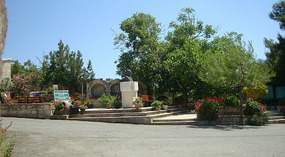
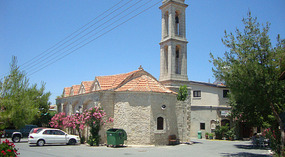
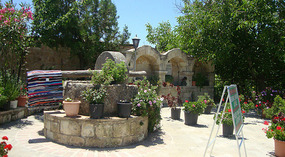
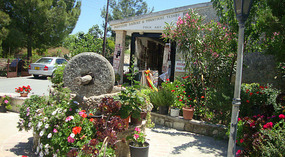
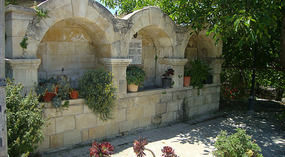

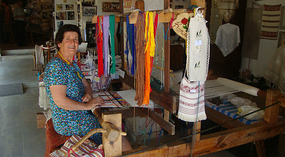
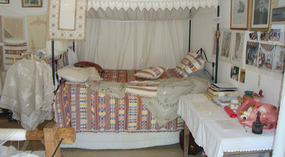






























































mmbcross
2012-07-03
The villages all look quite similar, and spotlessly clean. Up to now I haven't even see a sweet wrapper in the streets.
rossport
2012-07-03
Martin beat me to it Popi the villages you visit i too have noticed have been very clean and shows pride of the locals. Again a top report and very informative i enjoy your tours very much .
I love the way that the locals paint their houses where they can a very bright colour to make up for the drab stone work it adds texture to the place.
Again thanks for a good review popi